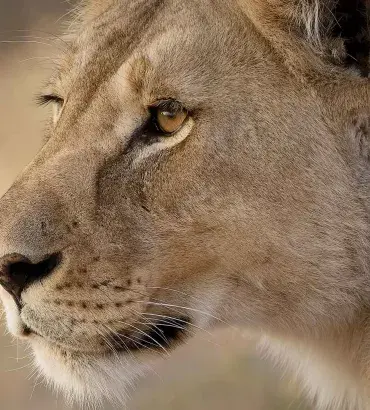Nigeria
Nigeria is home to a wealth of biodiversity within its seven national parks.
Nigeria lies on the western part of Africa on the Gulf of Guinea. It contains several large urban centers like the capital city Abuja and is one of sub-Saharan Africa’s largest economies, relying heavily on oil as its main source of foreign exchange earnings.
Despite its wealth of oil, the country faces significant problems with wealth disparity, inadequate power supply, lack of infrastructure, and an inconsistent regulatory environment such as judicial enforcement of national park legislation.
South Africa
South Africa is one of the world’s most diverse countries.
The Republic of South Africa is in the southernmost region of the continent. Its long coastline stretches along the South Atlantic Ocean and the Indian Ocean for more than 2,400 kilometers (1,500 miles). While its coastline is lush, the rest of its geography is vast, flat, sparsely populated, and dry. More than 1,600 kilometers (1,000 miles) south of the mainland lie the Prince Edward Islands, a small sub-Antarctic archipelago.
Tanzania
A third of Tanzania is protected.
From its stunning Indian Ocean beaches to the shores of Lake Victoria, from the arable plains of its central plateau to the heights of Mt. Kilimanjaro, Tanzania is a jewel of East Africa. It is the largest country in the region, formed in 1964 by the union of Tanganyika and Zanzibar. Among Tanzania’s neighbors are Kenya to the north and Mozambique to the south, with multiple landlocked nations to its west relying on it for access to the coast.
Kenya
In Kenya, conservation is a cornerstone of the economy.
Kenya is a country of diverse, rich habitat. The humid broadleaf forests along the coast of the Indian Ocean give way to lush grasslands and savannas. The Kenya Lake System of the geologically dramatic Great Rift Valley is a UNESCO World Heritage Site. And, Mount Kenya — the nation’s namesake — is the second-tallest mountain on the continent.
Uganda
Uganda has an extraordinary natural beauty and significant untapped tourism potential.
From the highest mountain range in Africa — the Mountains of the Moon — to the mighty Nile, Uganda is filled with natural beauty.
So, it’s only natural that there is a variety of wildlife and flora found within the country’s boundaries. More than half of the world’s endangered mountain gorillas, over 1,000 bird species, along with seven out of the 18 plant kingdoms, and more than 340 mammal species find sanctuary in Uganda.
Zimbabwe
Zimbabwe is facing food and water insecurity.
Officially called the Republic of Zimbabwe, this Southern African country is located between the Zambezi and Limpopo rivers. Home to 350 species of mammals, more than 500 birds, and 131 fish species, Zimbabwe is mostly grassland, but its mountains give way to tropical and hardwood forests. Zimbabwe supports the second largest population of elephants, important and growing populations of lion and wild dogs, and was once the agricultural breadbasket in Africa.
Pagination
- Previous page
- Page 2
